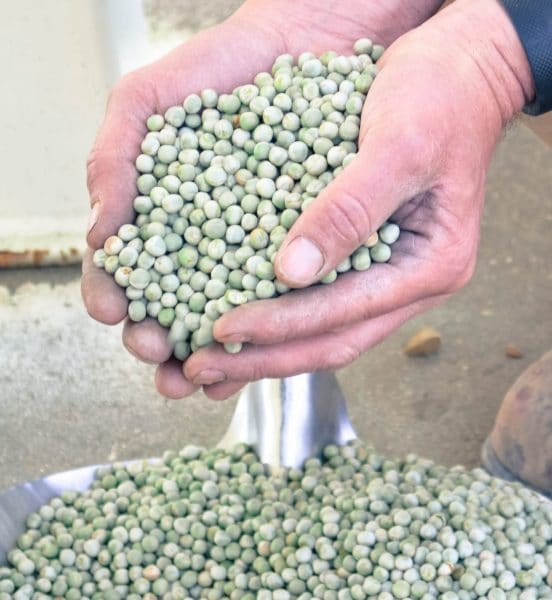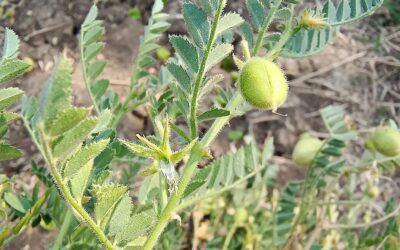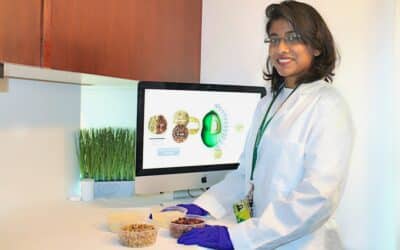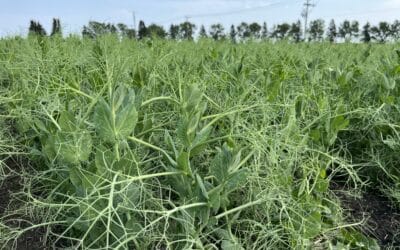They may not rank up there with the likes of The Tragically Hip or maple syrup, but it could be argued that Canadian pulses rank among this country’s greatest national treasures.
Pulses represented approximately six per cent of the total field crop area in Canada in 2011 according to Census of Agriculture statistics. In addition, pulse area and production has significantly increased in Canada since the 1980s, making the country one of the leading producers and exporters of pulses in the world. The numbers in Alberta are equally impressive, where a total of 2,363 farms (19.5 per cent) grew pulses in 2011 and planted just over 348,000 hectares of yellow peas, lentils, faba beans, chickpeas and other pulses that year.
But like any treasure, pulses need to be properly handled in order to reduce the risk of potential harm. That’s especially true when it comes to pulse seed, according to Nathan Gregg, program manager of applied agricultural services for the Prairie Agricultural Machinery Institute (PAMI), one of the leading research agencies for testing and evaluating farm machinery in Canada.
Gregg says one of the challenges with pulse seed is that it’s often larger than many other types of seed which can make it more susceptible to harm, including mechanical and handling damage. Complicating matters is the fact that some of that damage may not be visually discernable, but rather sub-surface hairline cracks or internal fractures which may affect its ability to absorb water and other internal germination processes.
Larger Seed, More Surface
“It’s a larger seed which might lead you to think it’s more robust and tough, but what ends up happening is that it gets some additional pinch points that other smaller seeds wouldn’t [have] so it sustains [more] damage in some of the mechanizations we have in auger flighting and things where there’s moving parts,” Gregg says. “Due to its size, it’s exposed to some of those impacts and pinch points that otherwise wouldn’t affect smaller seed.”
In addition, Gregg points out that the genetic makeup of pulse seed — including factors such as seed coat thickness or elasticity, oil content and starch cellular structure — is another issue and can make it more susceptible to impact damage, especially depending on moisture content.
What exactly does that mean for pulse growers here in Alberta? The simple answer is potentially less money in their pockets. Any seed damage can lead to a lower quality crop which in turn can lead to deductions and discounted prices of as much as 30 per cent, both domestically and internationally.
“It’s very important for producers to try and minimize the amount of cracked seeds that they have and also splits,” says Nevin Rosaasen, a policy and program specialist for the Alberta Pulse Growers (APG).
Potential Price Reductions
“Splits and cracks … result in price reductions as dockage and they’re not getting paid for the whole seed or it results in quality downgrades. The price difference is always fluctuating. It’s similar to the protein market in wheat. If you have nice quality peas or beans you can usually negotiate a better price. If you have too many cracks in the seed coat you will be discounted.”
Another concern is that cracked or damaged pulse seed can also mean more plant material finding its way into the seed, which can lead to an increased risk of disease such as mould or fungus.
So, what can pulse growers do to prevent or mitigate damage to seed? Gregg says the most common piece of advice he offers to growers is to reduce exposure to any potentially damage-causing incidents, and limit their severity, whether its rotating mechanical parts, impact from high drops or just gravity acceleration.
“In simple terms … avoid overhandling these types of crops. If you can put [the seed] through an auger once instead of twice or directly into the truck and skip the grain cart or different things like that where you introduce the opportunity for damage to occur, do it,” he says.
Rosaasen agrees and says that’s especially true for a pulse crop like peas. He recommends growers slow down the speed of any auger they might use and keep it covered with grain at the bottom to help minimize the amount of cracks caused to the seed. In fact, he says a growing number of farms are switching to conveyor systems to reduce the risk of damaging seed or grain.
A Gentler Option
“Many producers have moved to conveyor augers which are more costly but they use a conveyor belt system rather than a corkscrew auger which is the conventional way of moving grain. They’re more costly but they’re very gentle and they handle pulses very nicely,” he says.
Another key factor to consider with pulse seed is moisture content, which can be something of a double-edged sword: too high a moisture level can lead to damage while too low a level can be equally problematic.
“We don’t necessarily understand it that well but anecdotally we can see a difference in the amount of damage sustained by these crops just based on moisture content,” says Gregg. “There’s kind of a sweet spot in terms of acceptable moisture where your chances of damaging that seed are minimized. Producers can try to cater their operations and their handling processes to that.”
That includes storing the seed. Moisture is almost unavoidable as grain or seed cools down inside a bin in the winter and dampness circulates down from the sides of the bin and up through the centre of it. Rosaasen stresses that while it’s a challenge, it’s not an insurmountable one.
“You’ll always get some moisture issues within bins because you’ve got those warmer sides,” he says. “That’s why it’s important to move your grain. Make sure that you have the ability to aerate and put air or wind through the grain that keeps the moisture moving out of the top of the bin and not allow it to build in spots.”
Another important quality factor to consider is something referred to as earth tag. That is when dust or even natural fungus breaks down plant material and adheres to the seed coat. In the case of yellow or green peas, it can show up as a slight discolouration on the seed coat. It often occurs when pea plants have been laid down by strong winds or a heavy rainfall. The bad news, Rosaasen says, is that it’s virtually impossible to clean off of seed.
Gregg says one of the simplest, and most effective, ways of preventing mechanical or cleaning damage to pulse seed is for growers to examine their entire production chain to see where it can or does occur and determine what can be done to reduce or eliminate any damage.
Analyzing your Processes
“Analyze your processes so that you are aware [of potentially damaging operations]. Some things you can’t avoid but there are things you can do to minimize exposure to damage-causing incidents. Monitor your operation and try to cater it to the best outcome,” he adds.
APG has recently stepped up its efforts to provide growers in the province with information on what they need to know when it comes to pulses. In conjunction with Lakeland College Applied Research it now offers a Pulse Agronomy Field School that caters to producers who already grow pulses as well as those who haven’t done so in a few years and offers information on everything from basic agronomy topics to seed treatment for pea leaf weevil management.
It’s also partnered with the Alberta barley, canola and wheat commissions as part of Making the Grade, a hands-on, one-day grading course for farmers and others employed in the agricultural sector. As part of the course’s pulse grading section, farmers are provided with information on techniques and best management practices to minimize splits, cracks and other quality concerns to maximize the value they receive for their pulse crops.
“We’ve had excellent feedback and demand for more workshops,” Rosaasen says.







